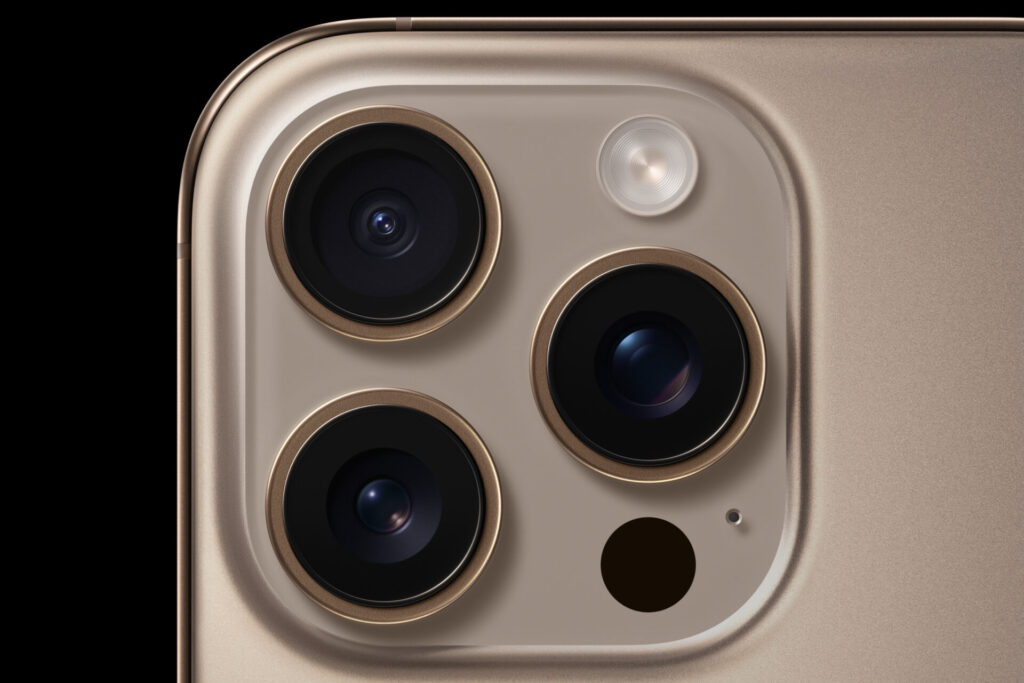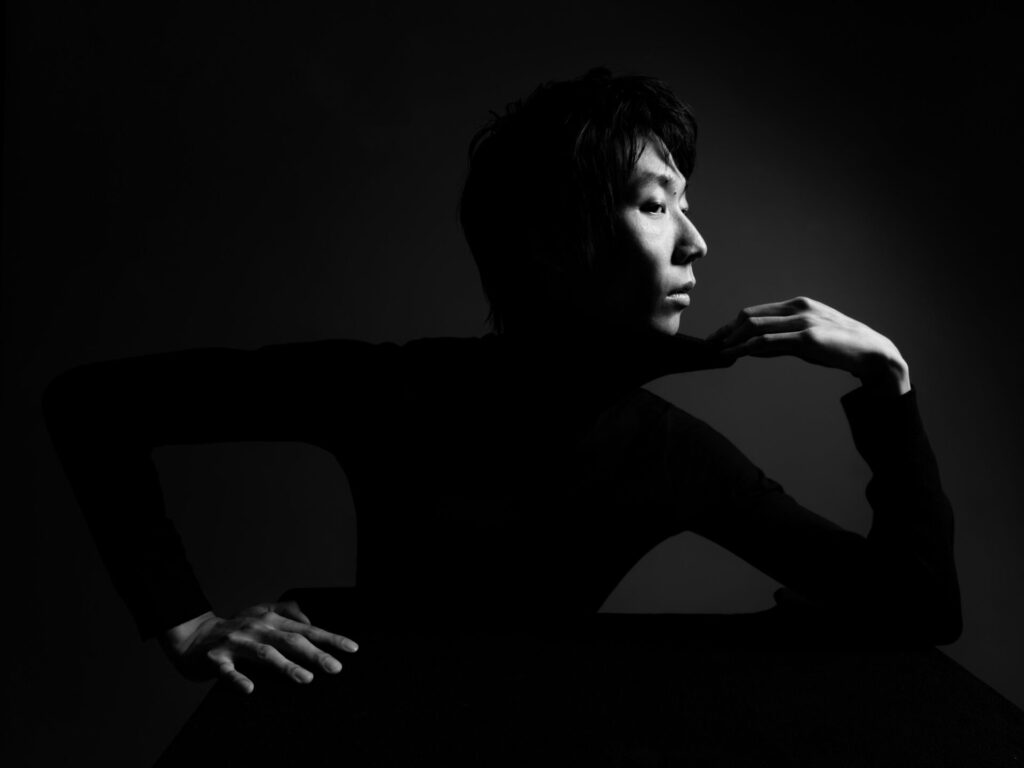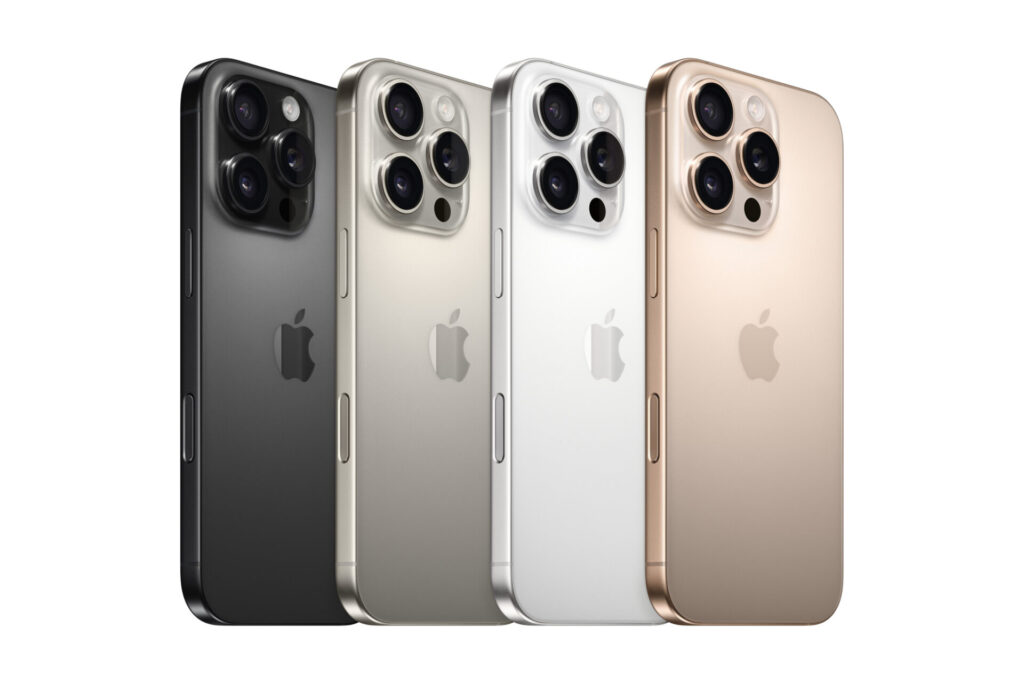Introducing Camera Control
Camera Control — a result of thoughtful hardware and software integration — makes the pro camera system more versatile with an innovative new way to quickly launch the camera, take a photo, and start video recording. It has a tactile switch that powers the click experience, a high-precision force sensor that enables the light press gesture, and a capacitive sensor that allows for touch interactions.
A new camera preview helps users frame the shot and adjust other control options — such as zoom, exposure, or depth of field — to compose a stunning photo or video by sliding their finger on the Camera Control. Later this fall, Camera Control will be updated with a two-stage shutter to automatically lock focus and exposure on a subject with a light press, letting users reframe the shot without losing focus.

Additionally, developers will be able to bring Camera Control to third-party apps such as Kino, which will offer users the ability to adjust white balance and set focus points, including at various levels of depth in their scene.
Later this year, Camera Control will unlock visual intelligence to help users learn about objects and places faster than ever before. Users can click and hold Camera Control to pull up the hours or ratings for a restaurant they pass, add an event from a flyer to their calendar, quickly identify a dog by breed, and more.
Camera Control will also serve as a gateway into third-party tools with specific domain expertise, like when users want to search on Google to find where they can buy an item, or to benefit from ChatGPT’s problem-solving skills. Users are in control of when third-party tools are used and what information is shared.
New Pro Creativity Across Photo, Video, and Audio
With iPhone 16 Pro and iPhone 16 Pro Max, the world’s favorite camera gets even more powerful. Powered by A18 Pro, the upgraded camera system introduces a new 48MP Fusion camera with a faster, more efficient quad-pixel sensor and Apple Camera Interface, unlocking 4K120 fps video recording in Dolby Vision — the highest resolution and frame-rate combination ever available on iPhone, and a smartphone first.
The quad-pixel sensor can read data 2x faster, enabling zero shutter lag for 48MP ProRAW or HEIF photos. A new 48MP Ultra Wide camera also features a quad-pixel sensor with autofocus, so users can take higher-resolution 48MP ProRAW and HEIF images when capturing uniquely framed, wider-angle shots or getting close to their subjects with macro photography.

The powerful 5x Telephoto camera now comes on both iPhone 16 Pro and iPhone 16 Pro Max, allowing users to catch the action from farther away, no matter which model they choose. iPhone 16 Pro and iPhone 16 Pro Max now take spatial photos in addition to videos to help users relive memories with remarkable depth on Apple Vision Pro.
Users can capture 4K120 fps in Slo-mo or Video mode, and adjust the playback speed after capture in the Photos app, including a quarter-speed playback, a new half-speed option for a dreamy effect, and a fifth-speed option that corresponds to 24 fps.
When coupled with the new image signal processor (ISP) of A18 Pro, users can do frame-by-frame cinema-quality color grading for 4K120 fps in Dolby Vision. Users can also capture 4K120 fps ProRes and Log directly to an external storage device for efficient pro workflows.
Both Pro models feature four new studio-quality mics that preserve true-to-life recorded sounds, and video can now be captured in Spatial Audio for immersive listening with AirPods, Apple Vision Pro, or a surround sound system.
The iPhone 16 Pro lineup also introduces creative new ways to edit video sound with Audio Mix — allowing users to adjust their sound after capture to focus on the voice of the person on camera, make it sound like the video was recorded inside a professional studio, or position vocal tracks in the front and environmental noises in surround sound. With wind noise reduction, powerful machine learning (ML) algorithms reduce unwanted noise for better audio quality.
Next-generation Photographic Styles help users express their creativity and customize their photos by locally adjusting color, highlights, and shadows in real time. Styles also have a deeper understanding of skin undertones, so users can personalize how they appear in photos.

Unlike filters, which often use a one-size-fits-all approach by adding a color to an entire scene, adjustments are applied to specific colors of a selected style. A wider set of styles offers more creative options for editing a photo’s aesthetic, and styles can be further personalized with an easy-to-use new control pad and intensity slider for simultaneous adjustments across tone and color. These adjustments can be rendered during live preview, applied after a photo is taken, or even reversed later.
Apple Intelligence takes the pro camera system to a new level. Coming later, Siri will be able to complete in-app requests and take action across apps, like pulling up a specific shot from a user’s Photos library and then applying an edit to the image in Darkroom. Siri can also help users fully utilize the wide range of photo and editing capabilities, such as asking how to adjust the blur in the background of a photo.



